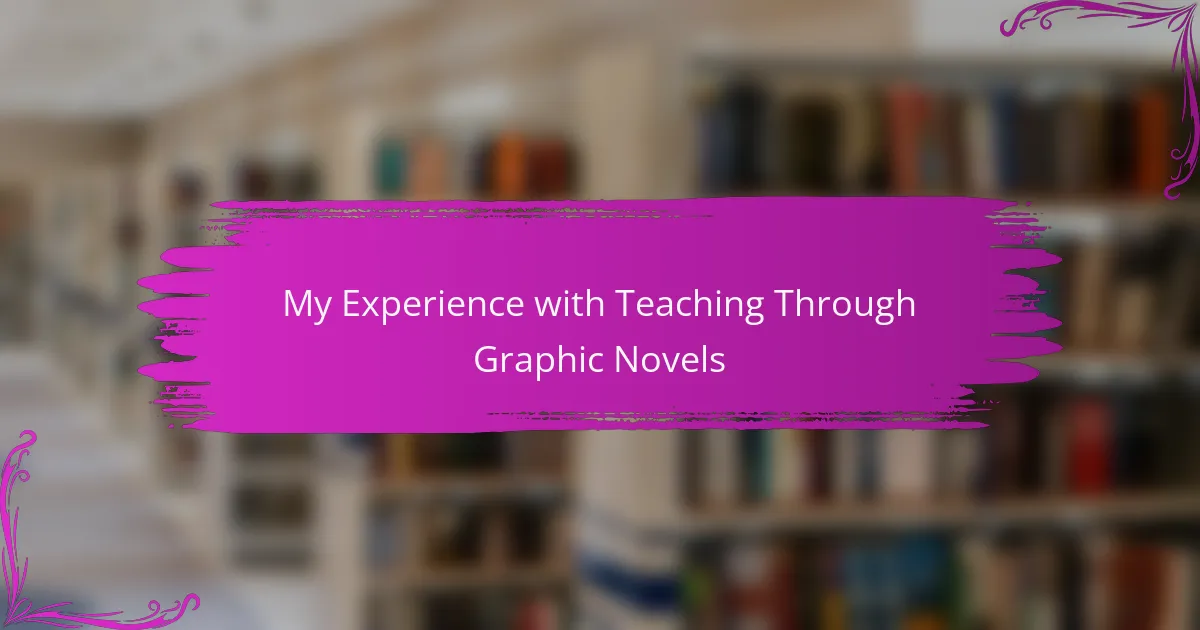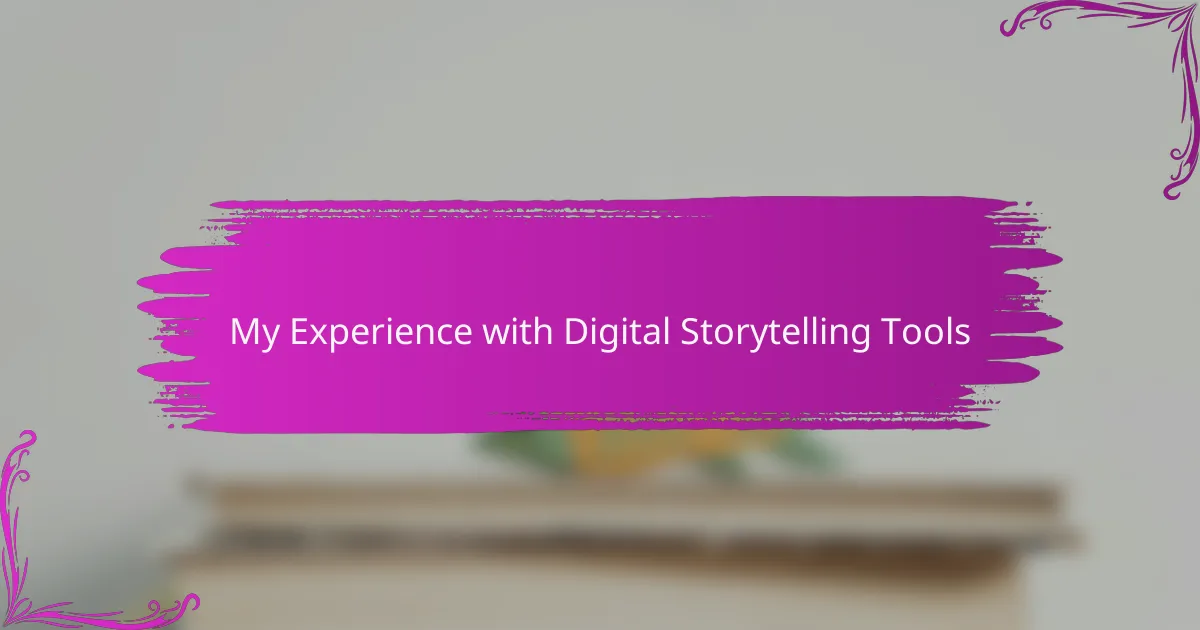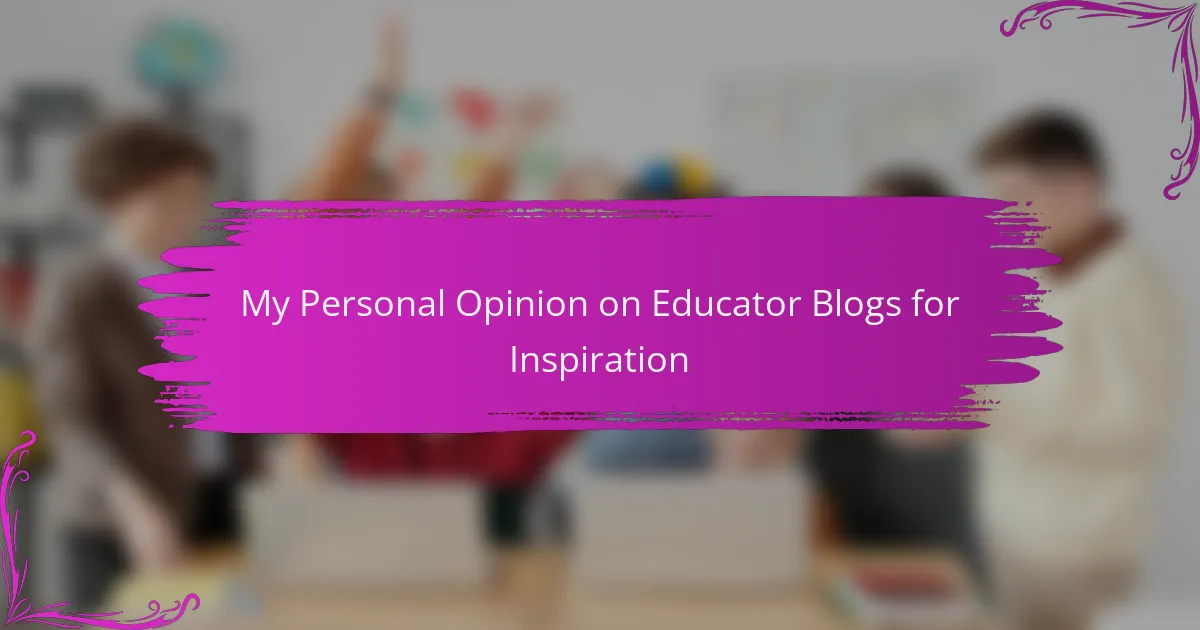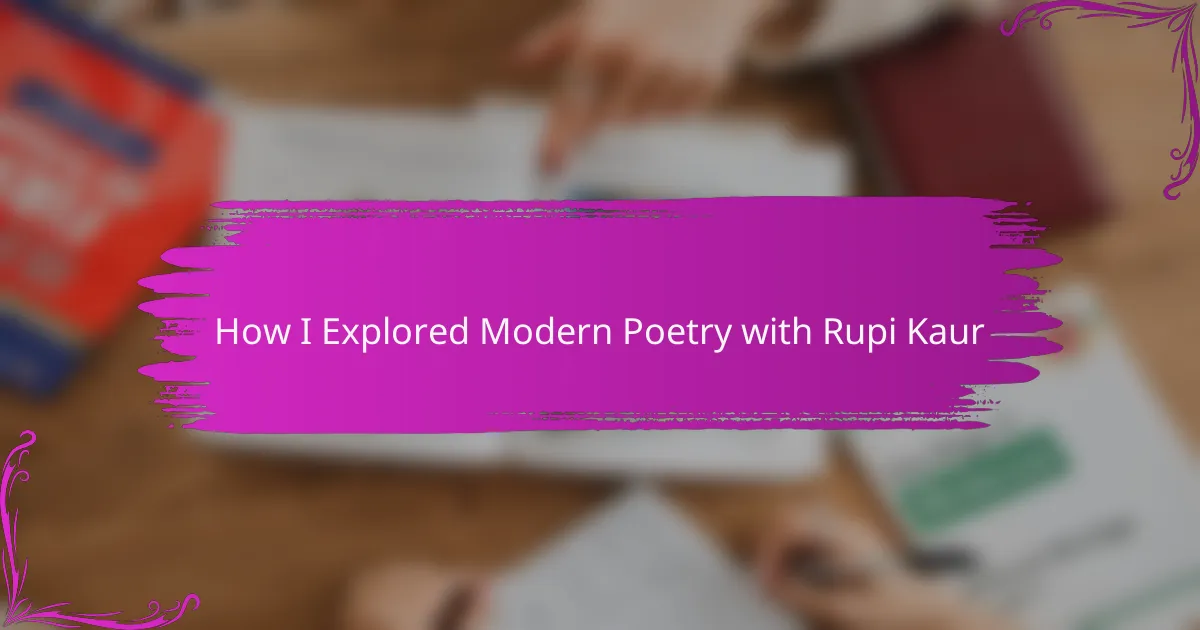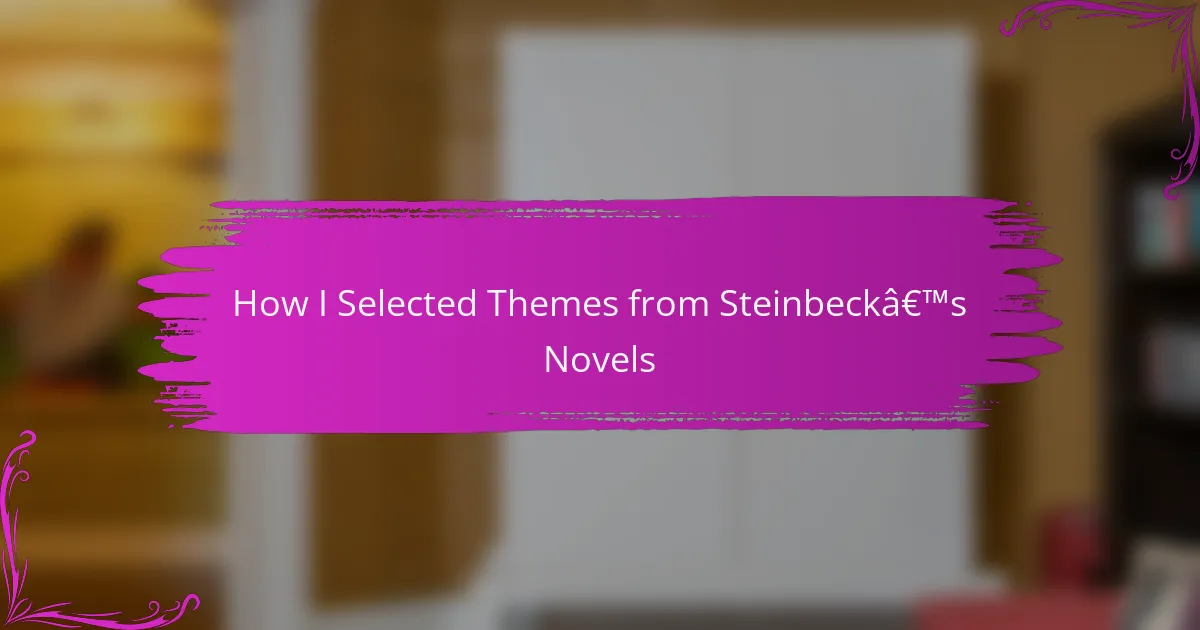Key takeaways
- Graphic novels enhance visual engagement and comprehension, making complex themes more accessible to students.
- They foster diverse perspectives and rich discussions, allowing students to connect personal experiences with literature.
- Incorporating graphic novels can increase motivation among reluctant readers, transforming their attitudes towards reading.
- Challenges include underestimating the medium’s depth and ensuring all students remain engaged with the content.
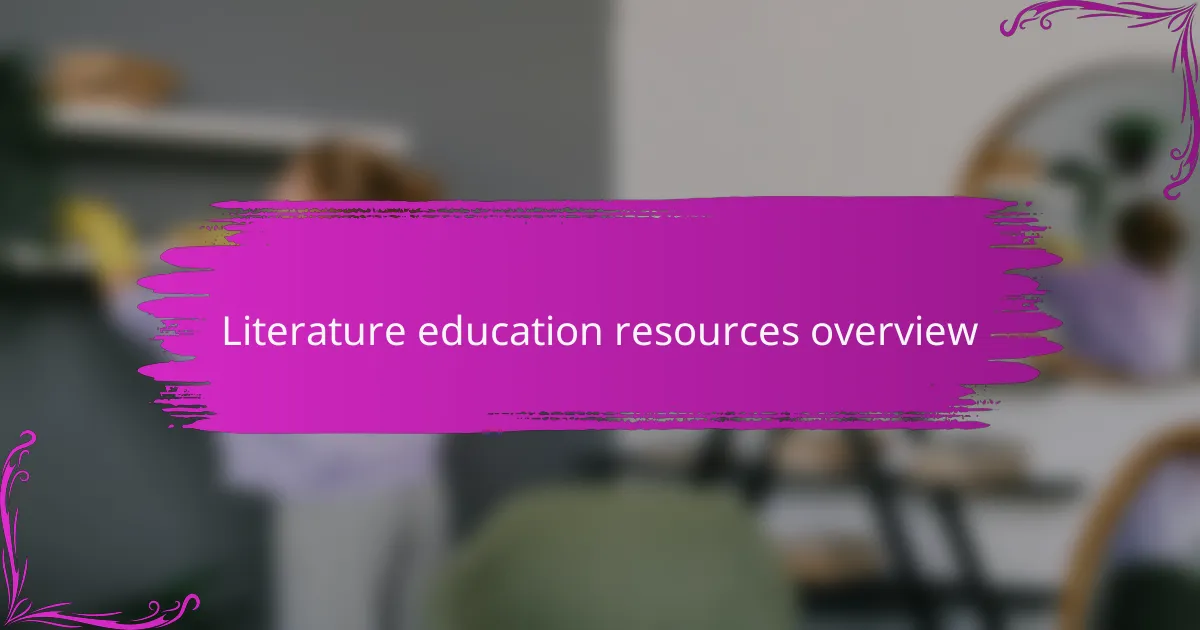
Literature Education Resources Overview
Literature education resources play a crucial role in shaping how students engage with texts. From traditional novels to innovative graphic novels, these resources can ignite passion in young readers. I remember when I first introduced graphic novels to my classroom. It was like a light bulb going off—students who typically shied away from reading were suddenly captivated by the combination of images and words.
Incorporating graphic novels into literature education can offer several benefits:
- Visual Engagement: The artwork draws in students, making complex themes more accessible.
- Diverse Perspectives: They often explore multifaceted issues, enabling rich discussions.
- Increased Motivation: Struggling readers may find graphic novels less intimidating, sparking interest in reading.
- Cultural Representation: Many graphic novels focus on diverse cultures and experiences, allowing students to see themselves represented.
- Creative Expression: They encourage students to think critically about storytelling through both text and visuals.
These resources not only enhance comprehension but also foster a deeper emotional connection to literature.
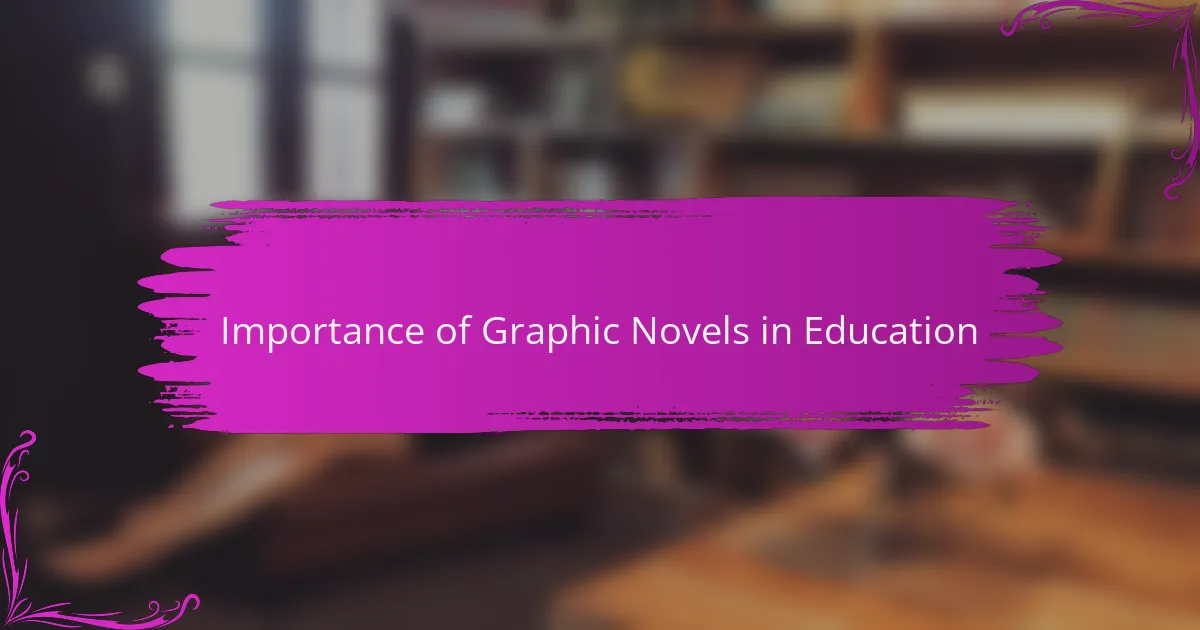
Importance of Graphic Novels in Education
Graphic novels hold a unique power in education, especially when it comes to visual engagement. I vividly recall one student, who had previously struggled with traditional texts, finally grasping a complex theme in a graphic novel through the vibrant illustrations. It made me wonder—how many students miss out on understanding literature simply because it doesn’t resonate with them visually?
I’ve seen firsthand the impact of diverse perspectives presented in graphic novels. For instance, discussing a graphic novel that highlights different cultural experiences sparked incredible conversations among my students. They began to share their own stories, and it became clear that literature can bridge gaps in understanding and foster empathy.
Moreover, graphic novels can truly ignite motivation in reluctant readers. I remember a student who was constantly disengaged in our reading sessions. After introducing a series of graphic novels, he couldn’t wait to get to our reading corner. It made me realize how these colorful stories not only invite young readers but also empower them to embrace reading as a joyful experience.

Benefits of Teaching with Graphic Novels
Graphic novels provide a unique way to enhance visual engagement, which I have found invaluable in the classroom. I still remember the moment when I observed students truly immersed in their graphic novel assignments; their eyes danced with excitement as they navigated the pages. It made me reflect on how images can sometimes capture emotions and themes more effectively than text alone, creating a bridge for students to understand complex concepts.
Diverse perspectives in graphic novels can open doors to rich classroom discussions. I often encourage my students to connect the stories to their own lives. For instance, when we read a graphic novel centered around cultural experiences different from theirs, we collectively explored important themes that sparked empathy and understanding. This exchange of personal stories not only deepened their connections to the text but also fostered a sense of community in the classroom.
Then there’s the remarkable motivation these books can instill in hesitant readers. One student who often struggled with traditional reading materials found solace and excitement in graphic novels. I recall the joy on his face when he completed his first one—it was as if he had conquered a mountain. This transformation made me ponder: how much more could we inspire students if we embraced various forms of storytelling? These are the moments that affirm my belief in the power of graphic novels in fostering a love for reading and learning.
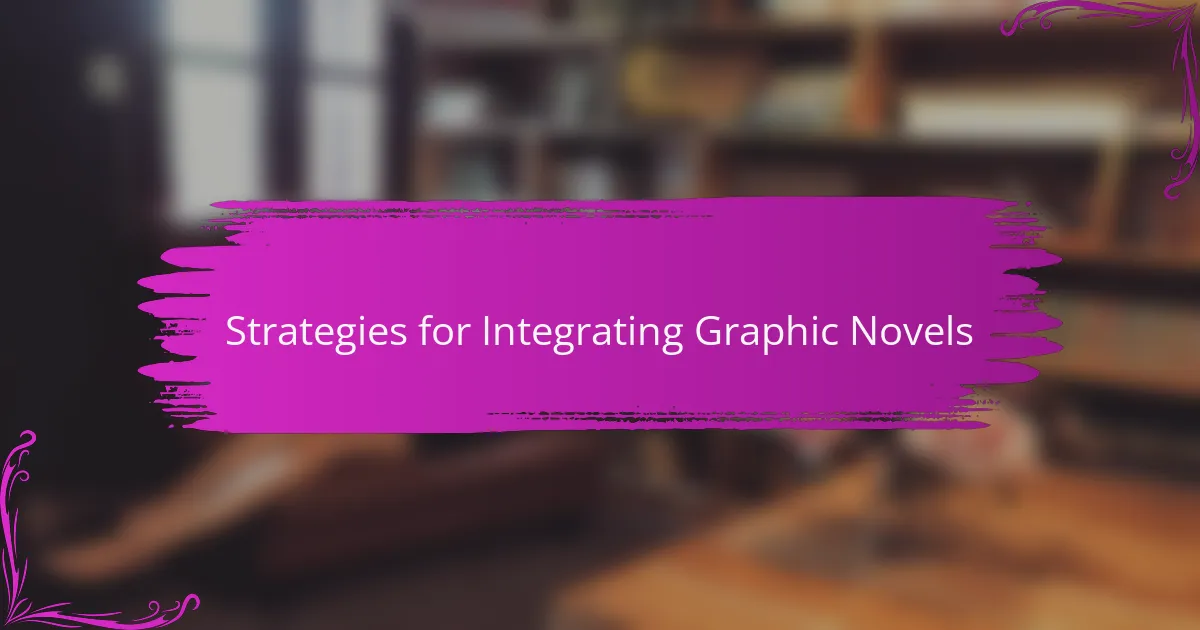
Strategies for Integrating Graphic Novels
Integrating graphic novels into the classroom can be an incredibly rewarding strategy. One approach I’ve found effective is pairing graphic novels with traditional texts. For example, after reading a classic novel, I introduce a graphic novel adaptation of the same story. This not only helps students visualize the narrative but also provides them with a fresh perspective on the characters and themes. It sparks conversations that I would have never anticipated.
I also emphasize the importance of choice in selecting graphic novels. I remember a time when I set up a ‘graphic novel corner’ in my classroom. Students eagerly browsed through the selections, discovering titles that piqued their interest. Allowing them to choose not only enhances their engagement but also fosters a sense of ownership over their learning. It’s incredible to witness the excitement when they share their favorite stories and illustrations with classmates.
Another strategy I’ve employed is incorporating graphic novels into thematic units. When we explore themes like friendship or identity, I select graphic novels that highlight these topics. During our discussions, students can analyze how the illustrations enhance the storytelling. I find that this multi-layered exploration encourages deeper critical thinking. Have you ever watched students light up when they connect emotionally with a graphic novel? It’s a beautiful moment that reinforces the impact of integrating these unique resources into our curriculum.
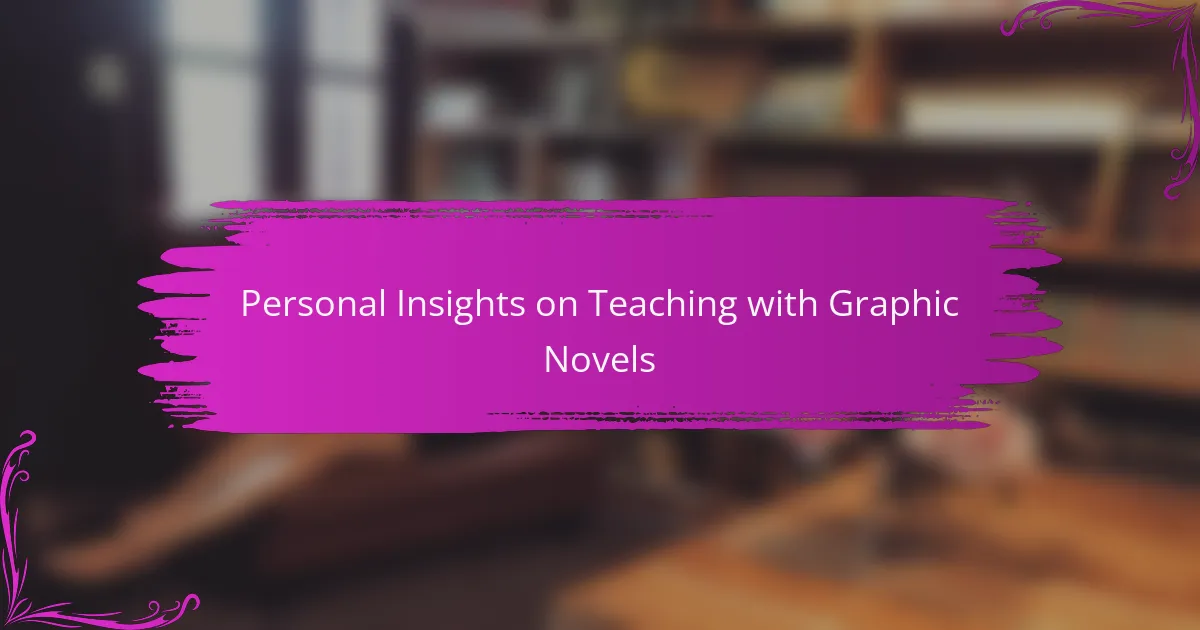
Personal Insights on Teaching with Graphic Novels
When I started incorporating graphic novels into my teaching, I was amazed by the instant engagement they brought to the classroom. I remember one student, usually quiet and reserved, was completely absorbed in a graphic novel about historical events. It was as if a door had opened for him, allowing him not just to read but to connect emotionally with the characters and their struggles.
Through my experience, I’ve discovered that graphic novels serve as a bridge for diverse learners. They provide visual cues that enhance comprehension and offer a unique way to analyze literary elements. I’ve seen students discuss themes and character development more deeply than with traditional texts, revealing insights I never expected.
Teaching with graphic novels has also fostered a sense of community in my classroom. Students often gather to share their favorite titles, sparking discussions that go beyond the pages. This collaborative environment is something I cherish, as it not only promotes literacy but also builds lasting relationships among students.
| Key Aspects | Graphic Novels | Traditional Texts |
|---|---|---|
| Engagement Level | High | Moderate |
| Diverse Learning Styles | Accommodates visual learners | Primarily text-based |
| Emotional Connection | Strong | Varies |
| Student Discussions | Dynamic and collaborative | Structured |
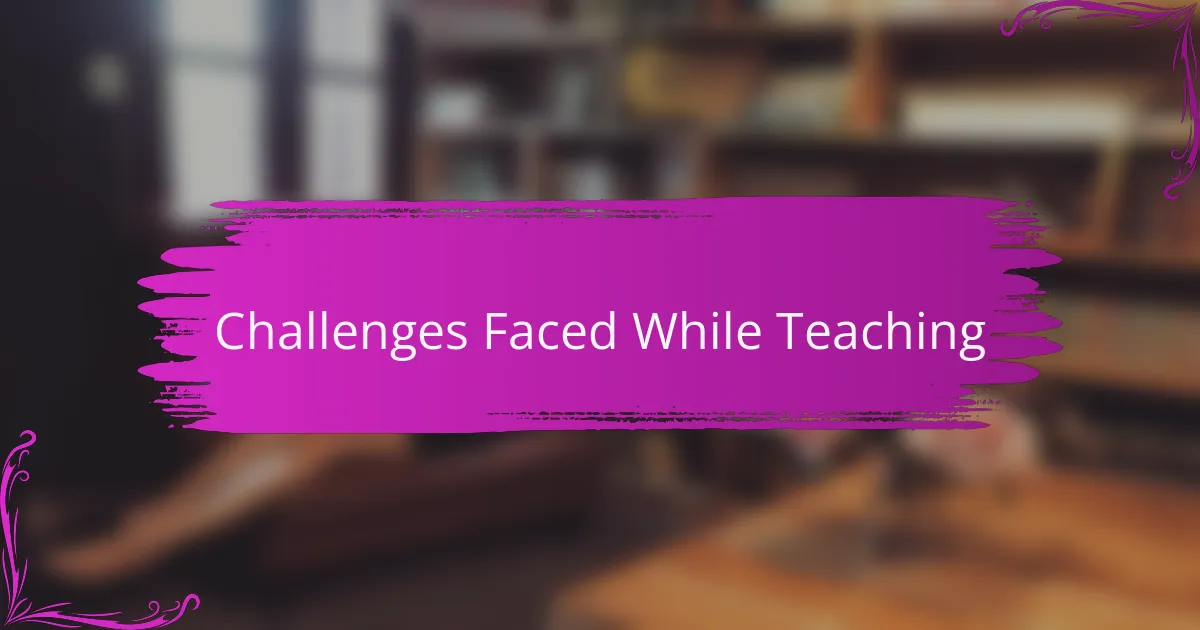
Challenges Faced While Teaching
Teaching through graphic novels comes with its unique set of challenges. Often, students might underestimate the depth and complexity of the medium, viewing it as less serious than traditional texts. I remember one student who initially dismissed a graphic novel as “just pictures,” but over time, they realized the narrative richness it offered.
Another challenge I face is ensuring that all students are engaged. Some might struggle to connect with the illustrations or find the pacing of the story different from what they’re used to. I vividly recall a lesson where a particularly reluctant reader found immense joy in a graphic novel—seeing that transformation reminded me how critical proper guidance is in overcoming these barriers.
In addition, varying interpretations of imagery can lead to diverse understandings among students. I have witnessed spirited discussions where students disagree on a character’s motivation based solely on their visual presentation. These misunderstandings can be enlightening but also tricky to navigate.
| Challenge | Description |
|---|---|
| Underestimation of Medium | Students may see graphic novels as less serious and overlook their depth. |
| Engagement Levels | Not all students connect with the illustrations, creating a divide in interest. |
| Interpretation Variability | Different interpretations of visuals can lead to varying understandings and discussions. |
